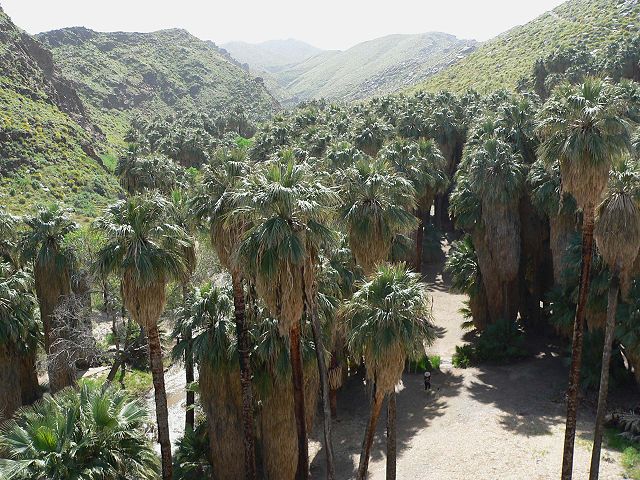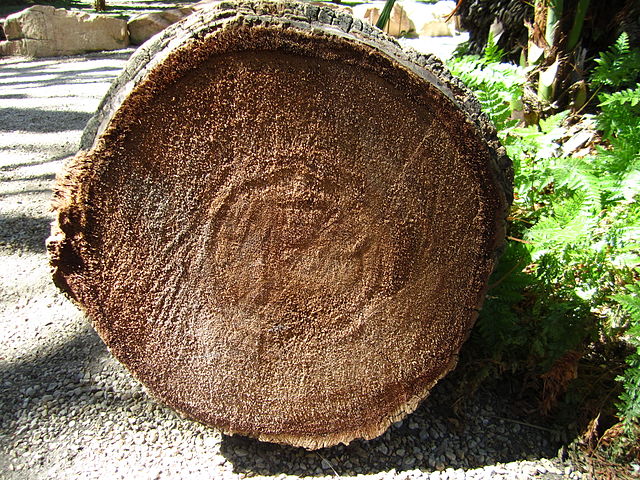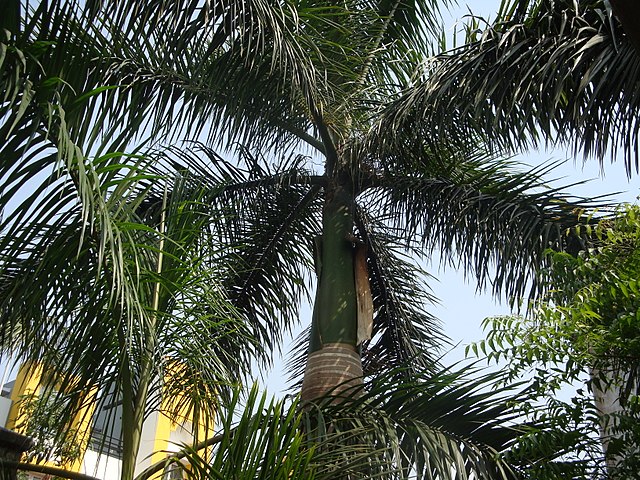Washingtonia filifera, the desert fan palm, California fan palm, or California palm, is a flowering plant in the palm family Arecaceae, native to the far southwestern United States and Baja California, Mexico. Growing to 15–20 m (49–66 ft) tall by 3–6 m (10–20 ft) broad, it is an evergreen monocot with a tree-like growth habit. It has a sturdy, columnar trunk and waxy, fan-shaped (palmate) leaves.
Washingtonia filifera
A grove of Washingtonia filifera south of Palm Springs.
W. filifera in Palm Canyon, Santa Rosa and San Jacinto Mountains National Monument
W. filifera frond with fibrous threads on leaf segments
The Arecaceae is a family of perennial, flowering plants in the monocot order Arecales. Their growth form can be climbers, shrubs, tree-like and stemless plants, all commonly known as palms. Those having a tree-like form are called palm trees. Currently, 181 genera with around 2,600 species are known, most of which are restricted to tropical and subtropical climates. Most palms are distinguished by their large, compound, evergreen leaves, known as fronds, arranged at the top of an unbranched stem, except for the Hyphaene genus, who has branched palms. However, palms exhibit an enormous diversity in physical characteristics and inhabit nearly every type of habitat within their range, from rainforests to deserts.
Arecaceae
Sawn palm stem: Palms do not form annual tree rings.
This grove of the native species Washingtonia filifera in Palm Canyon, just south of Palm Springs, California, is growing alongside a stream running through the desert.
Two Roystonea regia specimens. The characteristic crownshaft and apex shoot, or 'spear', are visible.







